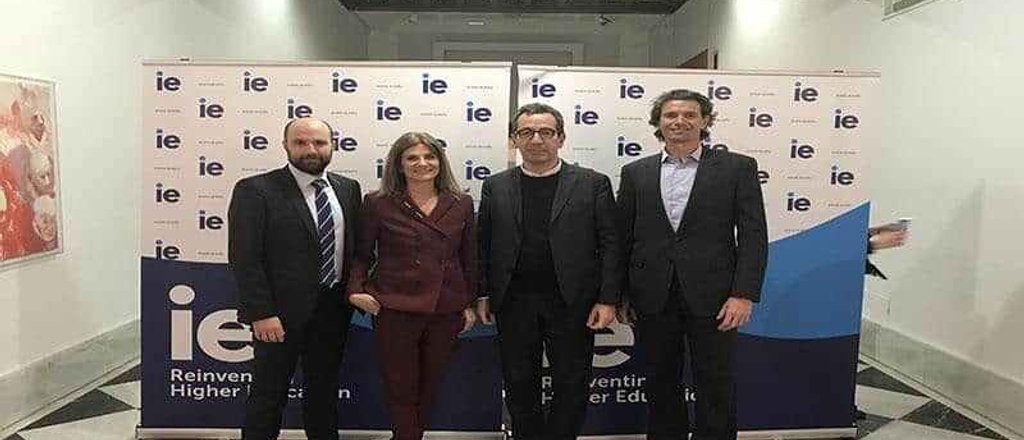- Home
- News And Events
- What’s Going On
- Creating Memorable Experiences And Social Responsibility Key Factors In The Luxury Sector
Creating memorable experiences and social responsibility key factors in the luxury sector

Crafting memorable experiences for clients is, for the third consecutive year, the most important factor in the luxury sector according to experts consulted during the preparation of the 2016 IE Luxury Barometer Report. Using social and environmental responsibility to build brand value is also important, and tourism is playing a pivotal role in driving growth in the luxury sector. These are some of the main findings of the third edition of the IE Luxury Barometer report, drawn up by the IE and Mastercard Observatory on the Premium Market and Prestige Products, which examines issues that experts agree were on their agendas in 2016 and will continue to be priorities throughout this year.
The main findings of the 2016 IE Luxury Barometer Report include the level of uncertainty affecting the sector as a consequence of the broader range of key issues. In previous years, priorities were clearly differentiated from remaining lesser factors, while the current greater diversity of priorities suggests a higher level of uncertainty. For the third consecutive year the biggest priority for luxury firms has been to create memorable experiences, and it is significant that this aspect, given the current situation of intense change, is still such a big priority.
Another finding was the growing importance of Corporate Social Responsibility (CSR) as a tool for building brand value in the luxury sector. CSR is the area that has grown most in terms of importance since the first edition of the report in 2015, and is now situated as a main priority. This reveals a strategic transformation in luxury firms due to the change associated with processes and policies.
These latest findings of the Luxury Barometer demonstrate that the second new issue in the sector is the role of tourism as a growth engine, and as one of the most important fields in terms of development.
The results appear to point to a more reactive (tactical) rather than proactive (strategic) climate in the face of market complexities. The most strategic aspects, such as change related with the business model and digitalization, appear to have less impact, which further evidences the changing environment and uncertainty in the sector.
“Luxury businesses need to have a long-term focus on their creative capacity and value creation. After years of expansion and development,” says David Millán, the IE professor who is heading the report. “It’s time to strengthen corporate capacities and define a strategic purpose that goes beyond mere growth.” Eva Ruiz, Director of Marketing at Mastercard Iberia, explains says: “We are in a moment of change when we have to employ all our imaginative and hitherto undiscovered skills to craft an experience that captures users’ imaginations and stays with them. That’s why here at Mastercard we’re working to innovate every day to offer a secure mobile payment service that is both fast and reliable.”
In previous editions the report underlined key aspect in order of importance. In this year’s edition, however, the results are more dispersed and there are a large number of issues that are level in terms of importance. The fact that the main strategic priorities are not so clearly differentiated as in previous years could be a sign of environments marked by change driven by uncertainty. Hence this greater dispersion of issues is indicative of further changes anticipated in the future.
"Experience, values, tourism and innovation are the terms most often used by professionals in the luxury sector when they talk about priorities. All these concepts feature in the 2016 IE Luxury Barometer Report, coupled with the respective explanations,” says María Eugenia Girón, Director of the IE Mastercard Observatory on the Premium Market and Prestige Products.
The 2016 IE Luxury Barometer has a dual objective. First, it seeks to discover the vision held by professionals in the luxury sector of key issues and trends in the market in 2016. And secondly, it aims to explore the implication that these issues can have for development within the sector in the short and long term. The study comprised two different phases. The first phase was a quantitative survey carried out with 50 people with recognized experience in the sector. The second phase consisted of a qualitative study based on a round table to debate the results of the initial qualitative phase.
About the study
The 2016 IE Luxury Barometer Report examined 40 key issues considered to have had a marked influence on the luxury market in 2016. It was also assumed that these aspects have been given priority by executives in the sector. The 2016 edition sought a deeper perspective of the digital transformation in luxury firms. In order to achieve this, instead of considering just one issue related to digital transformation, two independent aspects were taken into consideration, thereby differentiating the digital communication process from the online sales process.